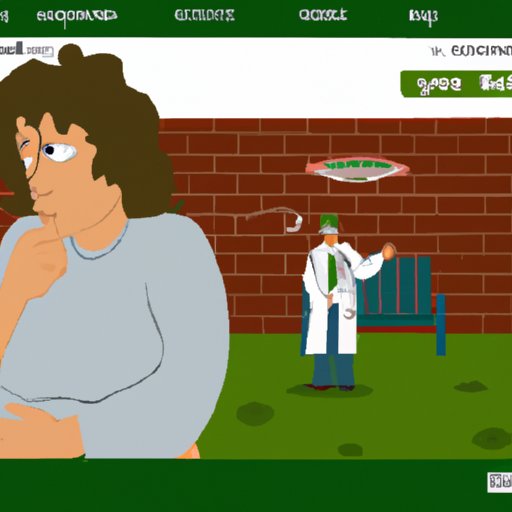
I. Introduction
If you’re experiencing discomfort or pain when passing stool, you may be suffering from piles disease. Also known as hemorrhoids, piles disease is a common condition affecting millions of people worldwide. Understanding the causes, symptoms, and treatment options for piles disease is key to managing the condition and preventing complications. In this article, we will take a comprehensive look at piles disease, covering everything from its definition to natural remedies and medical treatments.

II. Understanding Piles Disease: A Comprehensive Guide
Piles disease is a condition where the veins around the rectum and anus become swollen, causing discomfort, bleeding, and other symptoms. There are two types of piles: internal and external. Internal piles occur inside the rectum, while external piles form around the anus. Both types can be painful and cause discomfort. Some common symptoms of piles disease include itching, discomfort, pain, swelling, and bleeding.
Diagnosing piles disease usually involves a physical examination and a review of your medical history. Your doctor may also perform a digital rectal exam, and in some cases, an anoscopy or sigmoidoscopy.
III. Breaking Down the Myths Surrounding Piles Disease
There are many myths surrounding piles disease, with some people believing that it’s contagious or only affects older people. However, piles disease affects people of all ages and is not contagious. Another myth is that the condition is caused by sitting on cold surfaces or eating spicy foods. While these factors can irritate piles disease, they are not direct causes of the condition. Educating yourself on the truth about piles disease is crucial for accurate diagnosis and effective treatment.
IV. 5 Natural Remedies for Piles Disease You Need to Try Today
While medical treatments such as surgery and medication may be necessary in some cases, there are also many natural remedies that can help relieve the symptoms of piles disease. Five natural remedies for piles disease you can try at home include drinking plenty of fluids, getting regular exercise, using aloe vera, applying witch hazel, and taking sitz baths. It’s crucial to understand how to use these remedies safely and effectively and to consult your doctor before trying any new treatments.
V. The Psychological Impact of Living with Piles Disease
Piles disease can take a toll on your mental health, causing stress, anxiety, and embarrassment. If left untreated, this can result in a decreased quality of life. Understanding and managing the psychological effects of piles disease involves seeking support from loved ones, talking to a mental health professional, practicing self-care, and engaging in stress-reducing activities.
VI. Piles Disease: When to Seek Medical Treatment and What to Expect
If home remedies and lifestyle changes do not improve your symptoms, medical treatment may be necessary. Some common medical treatments for piles disease include rubber band ligation, injection therapy, and surgery. It’s essential to understand when to seek medical treatment for piles disease, such as when bleeding is heavy or uncontrolled. Your doctor will perform a physical examination and review your medical history before recommending the best treatment options for you.
VII. How Piles Disease Affects Women Differently than Men
Piles disease affects women differently than men due to pregnancy and childbirth. Hormonal changes during pregnancy can increase the risk of developing piles disease, while childbirth can cause trauma to the pelvic floor, leading to piles disease. Treatment options for women may involve lifestyle changes, such as avoiding constipation, and medical treatments, such as topical medications or surgery.
VIII. What Causes Piles Disease and How to Prevent It
Several factors can lead to piles disease, such as chronic constipation, straining during bowel movements, and being overweight. Good bowel habits, such as drinking plenty of water, eating a fiber-rich diet, avoiding straining during bowel movements, and avoiding sitting for prolonged periods, can help prevent piles disease. Regular exercise can also help improve bowel function and prevent piles disease.
IX. Conclusion
In conclusion, piles disease is a common condition that affects millions of people worldwide. Understanding the causes, symptoms, and treatment options for piles disease is key to managing the condition and preventing complications. While there are many natural remedies and medical treatments available, it’s important to consult your doctor before trying any new treatments. Remember to practice good bowel habits, seek support from loved ones, and speak to a medical professional if needed.
If you’re experiencing discomfort or pain when passing stool, you may be suffering from piles disease. Understanding and managing the condition is key to improving your quality of life and promoting overall health and wellness.





